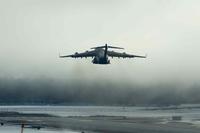 This article first appeared in Aviation Week & Space Technology.
This article first appeared in Aviation Week & Space Technology.
The U.S. Army is short of meeting its annual requirement to train helicopter pilots by about 300, says Gen. Martin Dempsey, who oversees the service's Training and Doctrine Command.
With high demand for helicopters in Iraq and Afghanistan, this shortage is frustrating commanders abroad who have enough airframes to accomplish their missions, but lack the crews to fly them. Crew training has been hindered by insufficient funding in personnel accounts.
The Pentagon requests 1,498 pilots annually to graduate from training here. However, the service is now producing only about 1,200 pilots per year.
About 70% of the shortage is in the Reserve components, with the remainder among active duty personnel, Dempsey says.
If Congress approves a proposal from Defense Secretary Robert Gates to boost funding by about $500 million in Fiscal 2010 for personnel associated with helicopter operations, Dempsey says he can close that gap in about two years.
This money would support training for pilots, flight crews and maintenance staff. Additionally, it would help pay for more simulation time for helicopter pilots. Prior to the war, about 18-20% of a student's time was dedicated to simulator operations. Now, about 39% of the training is done in simulators. And, that number is expected to increase to 45%, according to Dempsey.
Meanwhile, Army officials have devised a new training process for helicopter pilots to ensure they are more proficient when they leave school and enter their operational units: Flight School XXI. Prior to the recent wars, Army officials used a three-phased approach to training helicopter pilots. The first, readiness level 3 (RL-3), provided flight skills but no tactics training. RL-2 provided skills and tactics tailored for a specific platform and RL-1 provided environmental training for the types of terrain where the soldier would be deployed. Ft. Rucker's training regimen provided only RL-3.
Now, however, through the Flight School XXI concept, pilots coming out of Ft. Rucker are proficient in their weapon systems (RL-2) and require only the additional environmental training for a forward deployment.
Read the rest of this story, see the USN's newest, biggest gator, check out the mysterious UAV of KAF and speculate on Israel's interest in Stealth Eagles from our Aviation Week friends, exclusively on Military.com.
-- Christian







